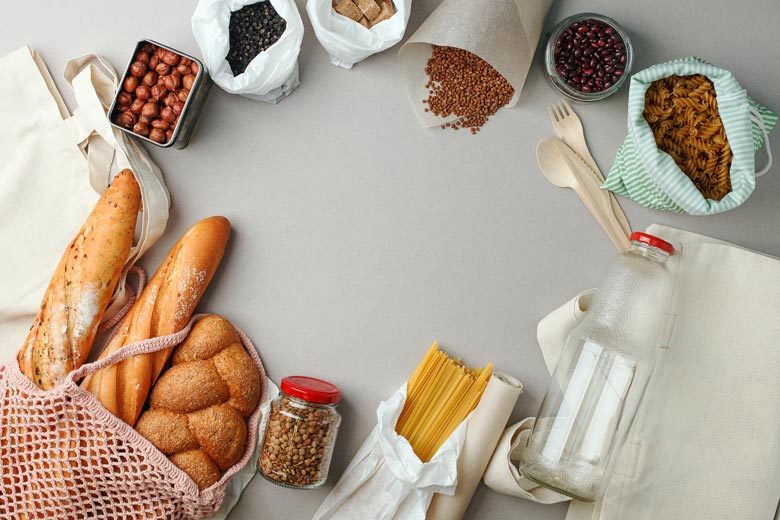
Although plastics can help protect our food and prevent contamination from bacteria and chemicals, when it comes to waste, a staggering amount of it comes from plastics used for food packaging. With single use plastic straws and bags recently banned in places around the U.S. and internationally, and the detrimental impacts to humans and environmental ecosystems, it’s important to think about how we can individually reduce our use of these materials.![]()
According to the U.S. Environmental Protection Agency, containers and packaging alone contribute over 23 percent of the material reaching landfills in the U.S. and much of that is from food packaging. This waste is reaching our landfills and polluting our beaches, ending up in the ocean where it harms wildlife and causes navigational hazards for boats — which creates losses in fisheries, tourism and other important economic resources.
With the increased consumption of convenience foods, snack foods, frozen foods and microwave meals, the demand for single use packaging is massive. It is also important to reduce the consumption of these items given they consume limited natural resources and use significant amounts of energy to produce and ship. Plastic threatens human health in terms of leaching harmful chemicals into our food, water supply and ambient environment that can negatively impact reproductive function and overall health.
Here are 5 ways you can reduce your food package waste:
1. Bring your own bags:
• At grocery stores and farmers markets. We use a plastic bag for about 15 minutes, then the bag hangs around for 1,000 years in a landfill. When you multiply this by the amount of people on the planet, that is a lot of plastic! Use cloth bags instead.
2. Decrease use of single use items:
• Buy a reusable water bottle or mug. If you go out for coffee or tea, bring your reusable mug.
• Use reusable dishware.
• Switch to bulk coffee and teas instead of using single-serving cups.
• Minimize convenience foods and take-out, which use a lot of plastic containers.
3. Identify and support companies that have demonstrated low waste packaging:
• Search for reputable rating systems to discover companies striving to reduce waste in their waste streams. One specific resource is TRUE Zero Waste, which provides a certification for companies based off what they reduce, reuse and compost, as well as what they can divert from landfills and incinerators. Take a look at their rating system and some certified facilities here.
• There are seven different codes that appear inside the triangle of three arrows on plastic packaging and tell you what material it is made of. Numbers 1 (polyethylene terephthalate, or PET) 2 (high-density polyethylene, or HDPE) have the best recovery rate for recycling.
• Seek out and opt to frequent businesses and restaurants that offer compostable products and focus on recycling and composting waste.
4. Recycle or compost packaging:
• Just because a product has a recycling symbol does not necessarily mean that it is recyclable. Numbers 3 and 5 cannot be recycled in most places in the U.S.
• Start a compost bin or search locally for a composting service that can return the composted soil to you for your garden or donate it to a local farm. You can compost items that say “compostable” or “PLA” on the packaging.
5. Advocate for policies in your home town or state to implement doing away with single use plastic items.
• Check with your local state officials to see if such efforts are ongoing.
• As consumers, we can vote with our wallets. Don’t buy and bring home a lot of packaging that can’t be composted or recycled.
It is important to remember that recycling should not be the goal, but it should be the last resort. It is a good idea to reduce the amount of plastics we buy because recycling requires energy to produce a new product, plastics that can’t be recycled are sent to landfill or incinerated, which further contributes to impacting the environment. Reduce, Reuse … Then Recycle!

